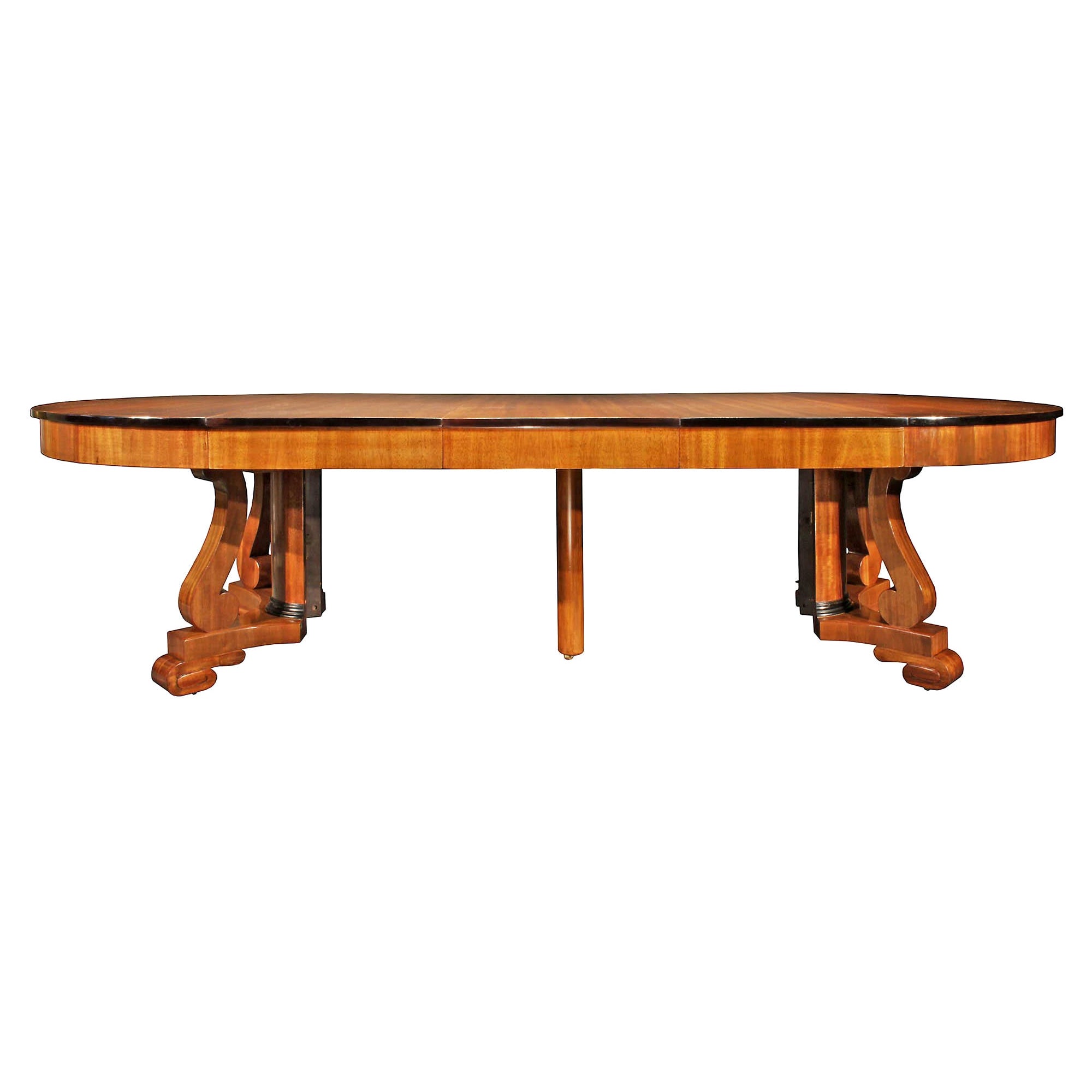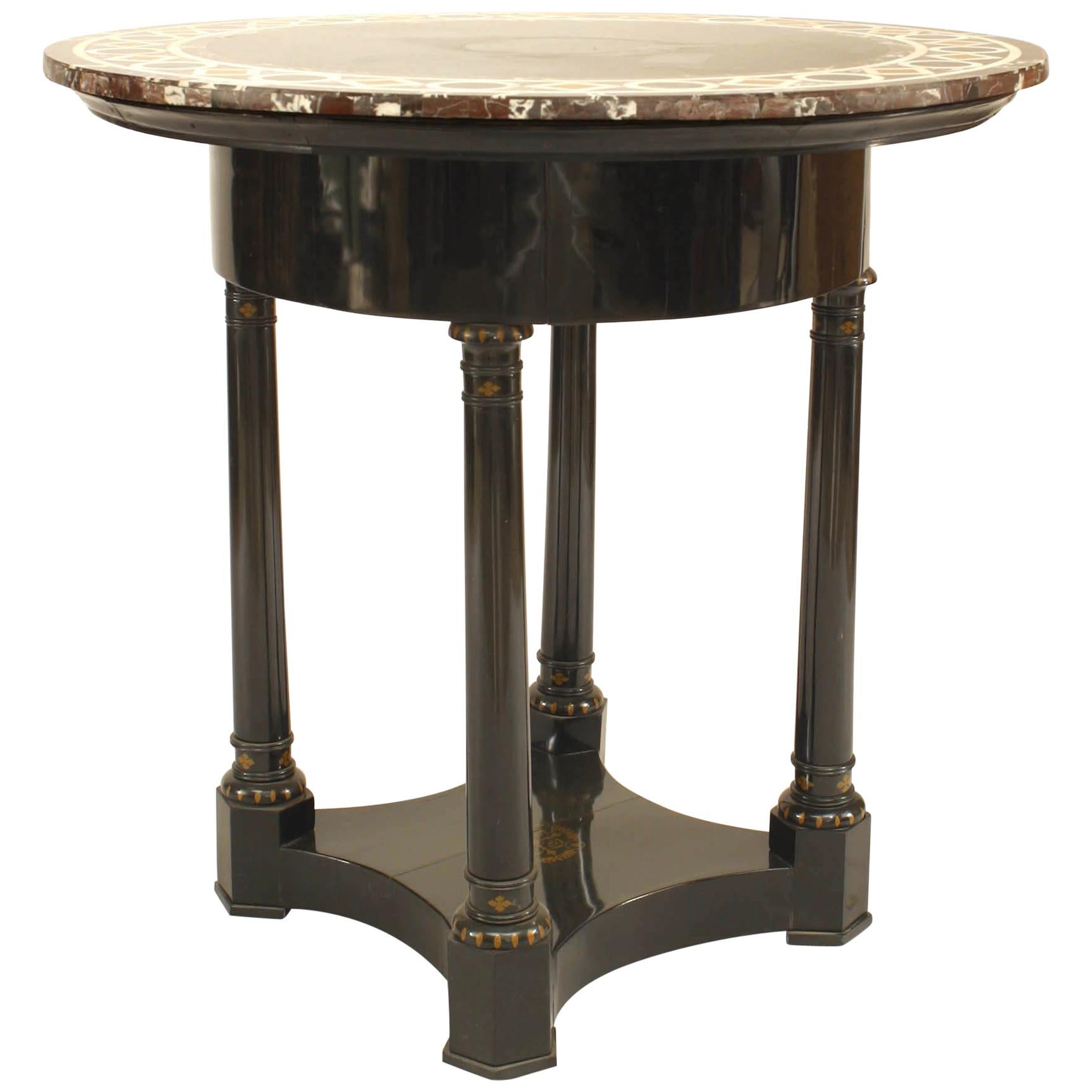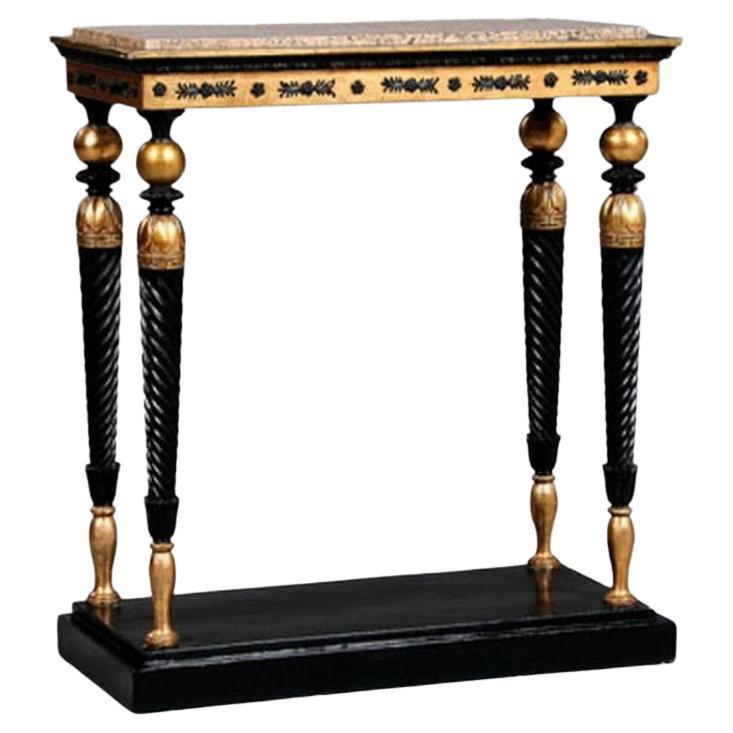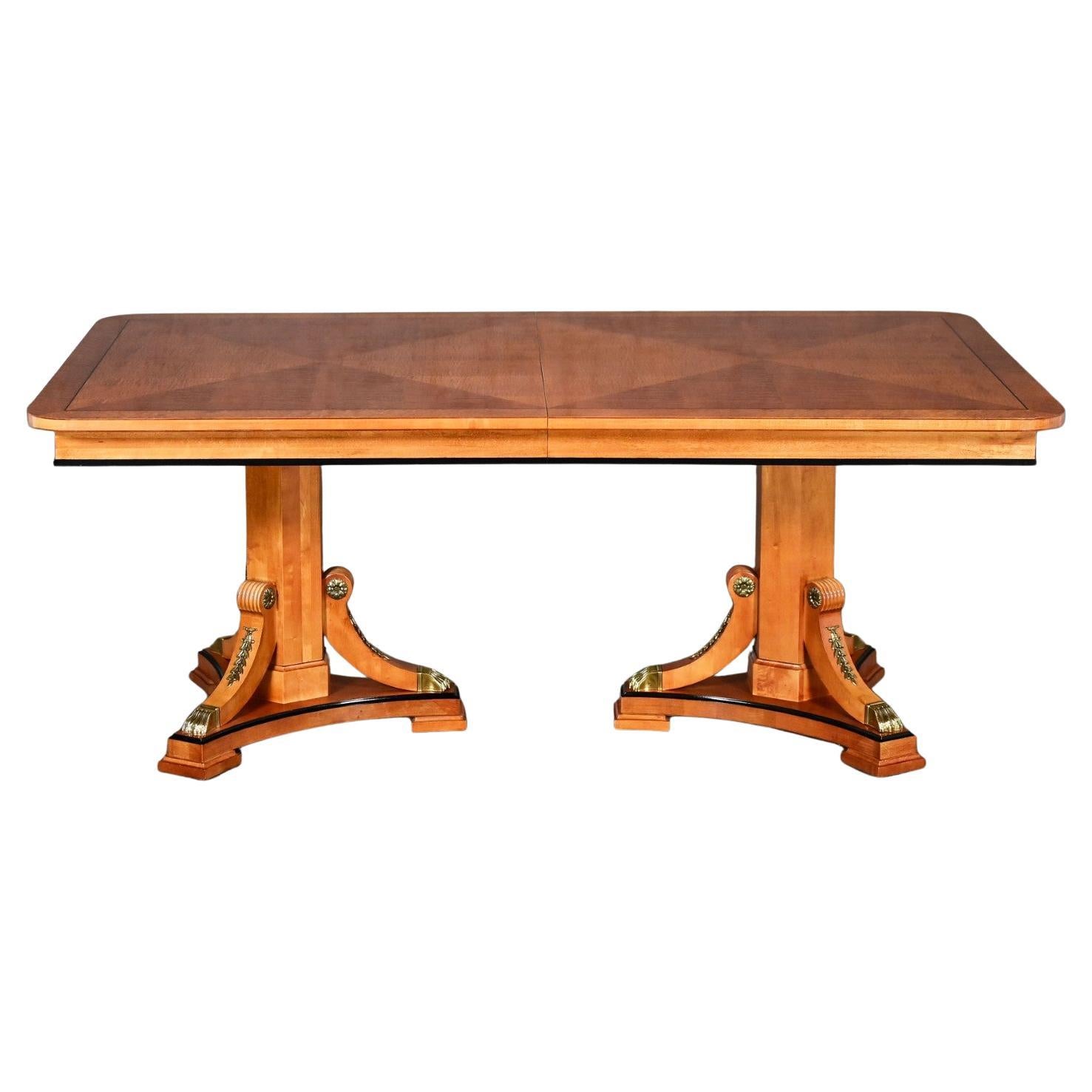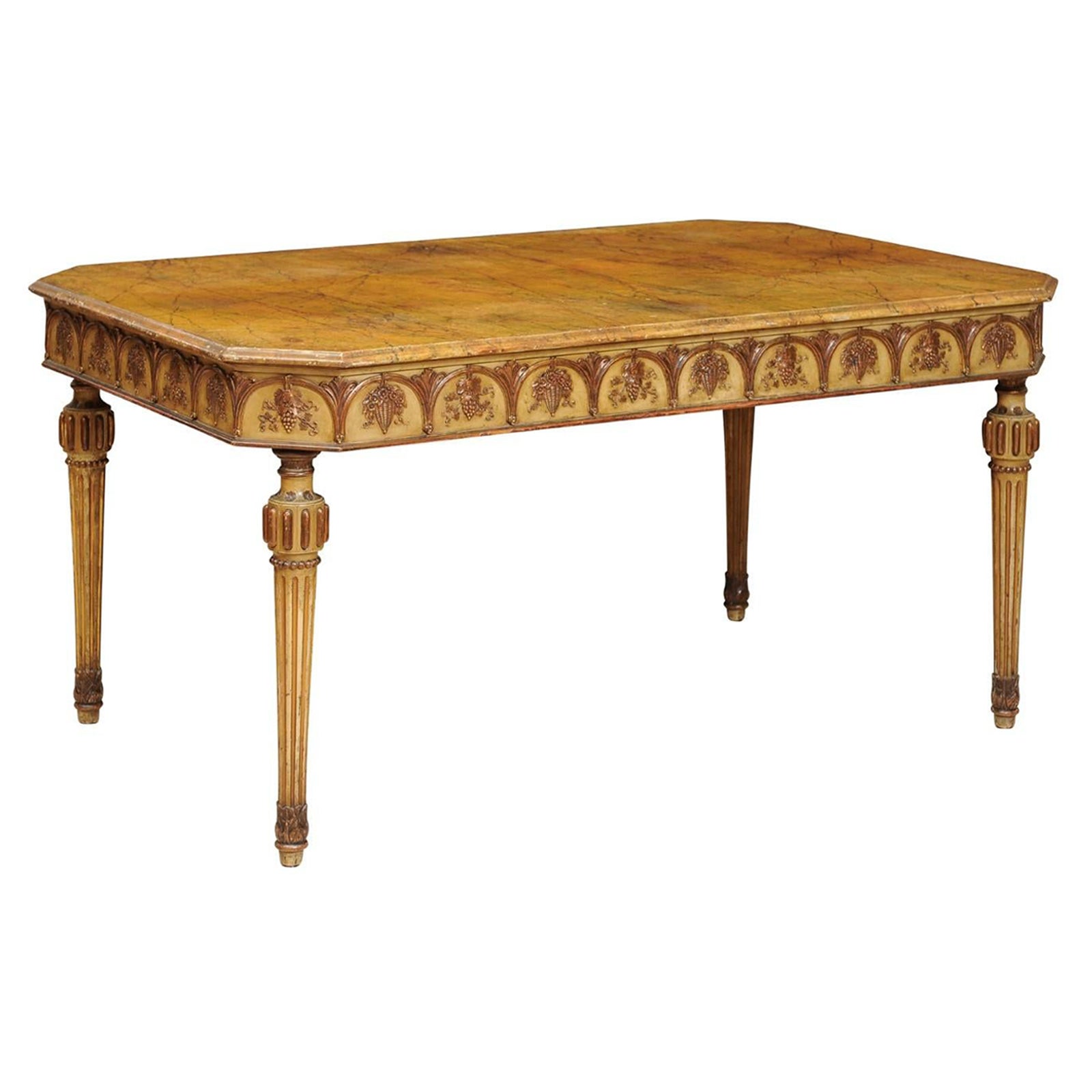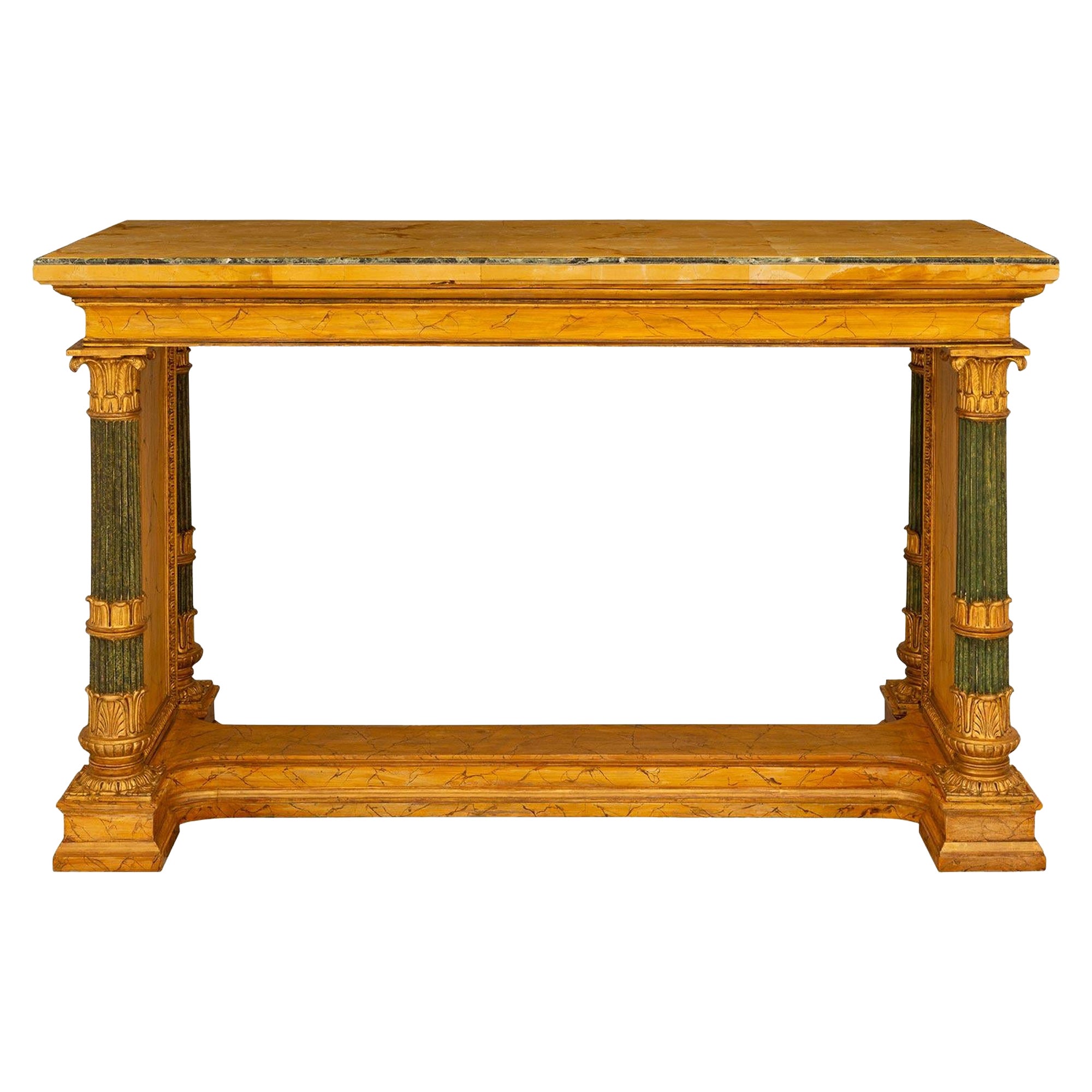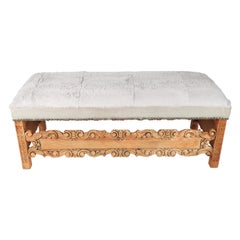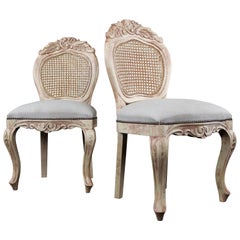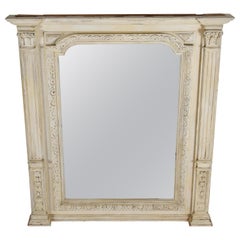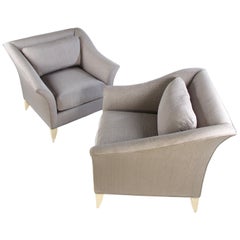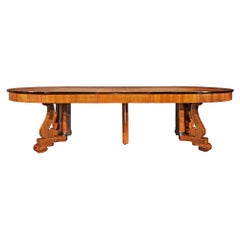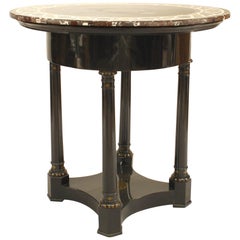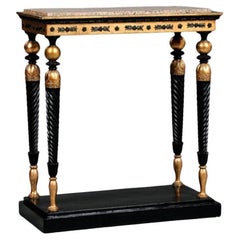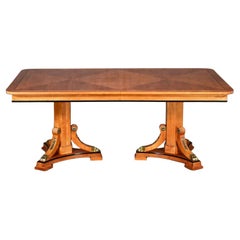Items Similar to Biedermeier Style Dining Table with Marble
Want more images or videos?
Request additional images or videos from the seller
1 of 9
Biedermeier Style Dining Table with Marble
$15,750
£12,262.13
€13,944.03
CA$22,644.02
A$24,867.53
CHF 12,986.29
MX$296,804.26
NOK 164,523.83
SEK 153,342.69
DKK 104,143.77
About the Item
Biedermeier dining table with bird's-eye maple veneer and Carrara marble. Could be used in a library, as an entry table, dining table or even a desk. This piece of art has an acanthus leaf design atop capitals of the column legs with black ebonized wood accents and fish scale details along the apron and base of the stretcher.
The Biedermeier period refers to an era in Central Europe between 1815 and 1848, during which the middle class grew in number, and arts appealed to common sensibilities. It began with the time of the Congress of Vienna at the end of the Napoleonic Wars and ended with the onset of the European Revolutions of 1848. Although the term itself is a historical reference, it is used mostly to denote the artistic styles that flourished in the fields of literature, music, the visual arts and interior design.
Biedermeier was an influential German style of furniture design that evolved during the years 1815–1848. The period extended into Scandinavia, as disruptions due to numerous states that made up the German nation were not unified by rule from Berlin until 1848. These post-Biedermeier struggles, influenced by historicism, created their own styles. Throughout the period, emphasis was kept upon clean lines and minimal ornamentation consistent with Biedermeier's basis in utilitarian principles. As the period progressed, however, the style moved from the early rebellion against Romantic-era fussiness to increasingly ornate commissions by a rising middle class, eager to show their newfound wealth. The idea of clean lines and utilitarian postures would resurface in the 20th century, continuing into the present day. Middle- to late-Biedermeier furniture design represents a heralding towards historicism and revival eras long sought for. Social forces originating in France would change the artisan-patron system that achieved this period of design, first in the Germanic states and, then, into Scandinavia. The middle class growth originated in the English Industrial revolution and many Biedermeier designs owe their simplicity to Georgian lines of the 19th century, as the proliferation of design publications reached the loose Germanic states and the Austro-Hungarian Empire.
The Biedermeier style was a simplified interpretation of the influential French Empire Style of Napoleon I, which introduced the romance of ancient Roman Empire styles, adapting these to modern early 19th-century households. Biedermeier furniture used locally available materials such as cherry, ash and oak woods rather than the expensive timbers such as fully imported mahogany. Whilst this timber was available near trading ports such as Antwerp, Hamburg and Stockholm, it was taxed heavily whenever it passed through another principality. This made mahogany very expensive to use and much local cherry and pearwood was stained to imitate the more expensive timbers. Stylistically, the furniture was simple and elegant. Its construction utilized the ideal of truth through material, something that later influenced the Bauhaus and Art Deco periods.
Many unique designs were created in Vienna, primarily because a young apprentice was examined on his use of material, construction, originality of design, and quality of cabinet work, before being admitted to the league of approved master cabinetmakers. Furniture from the earlier period (1815–1830) was the most severe and neoclassical in inspiration. It also supplied the most fantastic forms which the second half of the period (1830–1848) lacked, being influenced by the many style publications from England. Biedermeier furniture was the first style in the world that emanated from the growing middle class. It preceded Victorian and influenced mainly Germanic-speaking countries. In Sweden, Marshal Bernadotte, whom Napoleon appointed as ambassador to Sweden to sideline his ambitions, abandoned his support for Napoleon in a shrewd political move. Later, after being adopted by the king of Sweden (who was childless), he became Sweden's new king Karl Johan. The Swedish Karl Johan style, similar to Biedermeier, retained its elegant and blatantly Napoleonic style throughout the 19th century.
Biedermeier furniture and lifestyle was a focus on exhibitions at the Vienna applied arts museum in 1896. The many visitors to this exhibition were so influenced by this fantasy style and its elegance that a new resurgence or revival period became popular amongst European cabinetmakers. This revival period lasted up until the Art Deco style was taken up. Biedermeier also influenced the various Bauhaus styles through their truth in material philosophy.
- Dimensions:Height: 32.063 in (81.44 cm)Width: 74 in (187.96 cm)Depth: 40.5 in (102.87 cm)
- Style:Biedermeier (In the Style Of)
- Materials and Techniques:
- Place of Origin:
- Period:
- Date of Manufacture:20th Century
- Condition:Wear consistent with age and use. The original marble has been replaced with a white carrara marble which has a few fine scratches. There is a small indentations to one of the wood columns. It is is over all great condition.
- Seller Location:Los Angeles, CA
- Reference Number:1stDibs: LU4655215623332
About the Seller
5.0
Vetted Professional Seller
Every seller passes strict standards for authenticity and reliability
Established in 2001
1stDibs seller since 2019
38 sales on 1stDibs
Typical response time: 3 hours
- ShippingRetrieving quote...Shipping from: Los Angeles, CA
- Return Policy
More From This Seller
View AllSpanish Colonial Style Hand Carved Bench
Located in Los Angeles, CA
A vintage Spanish Colonial style bench which has been bleached, and is hand carved from solid Alder wood. It has been reupholstered in grey rabb...
Category
Late 20th Century European Spanish Colonial Benches
Materials
Hardwood
Pair of French Country Side Chairs
By JB Freeman
Located in Los Angeles, CA
A pair of round side chairs in the style of Louis XV with cabriole legs headed with carved acanthus leaves, a round caned back with cresting that is e...
Category
2010s American Louis XV Chairs
Materials
Linen, Cane, Hardwood
$1,975 / set
Antique 19th Century French Mercury Glass Mirror
Located in Los Angeles, CA
Antique 19th century French mercury glass wall or floor mirror. Frame is made from wood with barley twist and wood molding with carvings. Old paint is flacking off. The Mercury glass...
Category
Antique Mid-19th Century French Empire Revival Floor Mirrors and Full-Le...
Materials
Mercury Glass, Hardwood
Set of Milo Baughman Biedermeier Lounge Chairs for Thayer Coggin
By Milo Baughman, Thayer Coggin
Located in Los Angeles, CA
This Biedermeier 90 collection, Milo Baughman did with Thayer Coggin in the is one of the last collections Milo and Coggin did together in the 1990's. Milo Baughman believed the midcentury style needed to be warmed up a bit.
For admirers of Biedermeier furniture, the neoclassical style that flourished in Austria and Germany from 1815-1830, the choices are few: scarce and expensive antique pieces and now, Milo Baughman's Biedermeier 90 collection for Thayer Coggin, a furniture maker in High Point, N.C.
''When I teach the history of modern design, I start with Biedermeier, because it's the first indication that there would be a new philosophy in design, furniture designed to be more honest and simple,'' said Mr. Baughman, who has designed furniture for Thayer Coggin since 1953 and also teaches design at Brigham Young University in Provo, Utah.
The 27-piece collection, which includes consoles, tables and upholstered seating, captures the spirit of Biedermeier design with honey-colored wood veneers, neoclassical fluted columns and natural steel finishes.
- Ref NYTIMES, 8/10/1989
“Eurostyle started out as a fairly valid design statement,” says Milo Baughman, a highly regarded veteran furniture designer who teaches at Brigham Young University in Provo, Utah. ''But when it was reduced to more commercial levels and picked up too quickly by people who make cheap furniture...
Category
1990s American Biedermeier Club Chairs
Materials
Fabric, Maple
1940s Italian Venetian Murano Glass Chandelier
By Murano 5
Located in Los Angeles, CA
Italian Venetian Murano 1940s style (modern) clear glass chandelier with six fluted scroll arms supporting a large bowl with large 6 glass feathers emanating from a centre shaft with...
Category
Mid-20th Century Italian Art Deco Chandeliers and Pendants
Materials
Metal
Mid-Century Modern Chrome Stacked Coffee Table by Paul Mayen for Habitat
By Habitat International, Paul Mayen
Located in Los Angeles, CA
Paul Mayen chrome stacked coffee table base for Habitat International
Architectural table with Minimalist design similar to Paul Evans. Sturdy base consisting of 3 levels of stacked...
Category
Vintage 1960s American Mid-Century Modern Coffee and Cocktail Tables
Materials
Chrome
You May Also Like
19th Century Biedermeier Dining Table
Located in West Palm Beach, FL
An exquisite late 19th century Biedermeier dining table. The table is raised on scrolled bun feet and original casters, below an X stretcher with concave sides and S scrolled design elements above. The central supporting column has an ebonized fruitwood mottled border, which separates and supports the table once expanded. Three leaves with apron, convert a round table to a full dining table with an ebonized fruitwood border. Warm rich patina throughout. The table can become a smaller oval table...
Category
Antique 19th Century Unknown Biedermeier Dining Room Tables
Materials
Fruitwood
Austrian Biedermeier Marble Top Center Table
Located in Queens, NY
Austrian Biedermeier (circa 1820) round ebonized center table with inlaid marble top & drawer supported by 4 columns ending in a platform base with gold stenciled decoration.
Category
Antique 19th Century Austrian Biedermeier Center Tables
Materials
Marble
Magnificent 19th Century Marble Top European Biedermeier Pier Table
By Biedermeier
Located in New York, NY
The Following Item we are Offering is A Magnificent Rectangular Carved, ONE OF A KIND, Original Beidermeier Wooden and Marble Top Table, Intricately detailed with Carvings, ebonized...
Category
Antique 19th Century German Console Tables
Materials
Bronze
$3,400 Sale Price
47% Off
Biedermeier Neoclassic Style Thomasville Grand Classics Extension Dining Table
By Thomasville
Located in Topeka, KS
Handsome vintage 1995 Biedermeier Neoclassic Revival Empire Style Thomasville Grand Classics maple extension dining table w/2 leaves. We even have a copy of the 1995 original purchas...
Category
1990s American Biedermeier Dining Room Tables
Materials
Brass
Italian Neapolitan Style Painted Dining Table with Faux Marble Top
Located in Atlanta, GA
Italian Neapolitan Style Painted Dining Table with Faux Marbleized Top, Fluted Legs & 2 Leaves, first half of the 20th century
Category
Early 20th Century Italian Dining Room Tables
Materials
Wood
Italian 19th c. Neo-Classical St. Marble, Faux Marble, & Giltwood Center Table
Located in West Palm Beach, FL
A high quality and beautiful Italian 19th century Neo-Classical st. Sienna, Giallo Antico, faux painted marble, patinated wood and Giltwood library/center table. This unique library ...
Category
Antique 19th Century Italian Neoclassical Center Tables
Materials
Marble
More Ways To Browse
Victorian 19th Century Extendable Table
Early 20th Century Desk Maple
Birds Eye Maple Dining Table
French Country Cherry Dining Table
Pietra Dura Table Top
Carved Lion Table
Empire Round Table
Marquetry Centre Table
Oak Centre Table
Rosewood Centre Table
Sunburst Veneer
Bronze Centre Table
Empire Style Center Table
Dolphin Regency
19th Century Drum Table
Antique Mahogany Drum Table
Antique Octagonal Center Tables
Lisette Rutzou
